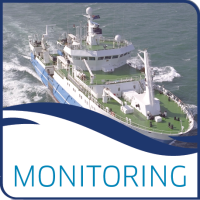Scottish Marine and Freshwater Science Vol 8 No 12
Diode array detectors (DAD) are widely used for the analysis of complex phytoplankton pigments in marine waters. A spectrum of each peak in the sample is collected, and when compared with that of a reference standard, the presence of a particular pigment can be confirmed or refuted, resulting in an increased confidence in pigment identification over a conventional UV detector. A method was developed and validated using high performance liquid chromatography (HPLC) with a DAD with the aim of replacing the pigment HPLC method using a UV detector. This report describes the development of that method.
Data and Resources
| Field | Value |
|---|---|
| Publisher | |
| Modified | 2020-01-07 |
| Release Date | 2017-08-23 |
| Identifier | 02ecb8d8-170d-4a42-bbd2-4444372bf927 |
| Spatial / Geographical Coverage Location | Scotland |
| License | UK Open Government Licence (OGL) |
| Author | |
| Data Dictionary | A C8 column was used as these have been shown to separate monovinyl and divinyl forms of chlorophyll a and lutien and zeaxanthin. This was not possible using a C18 column. Vitamin E actetate was added to the extraction solvent and used as the internal standard. All pigments of interest (19 – butanoyloxyfucoxanthin, 19-hexanoyloxyfucoxanthin, alloxanthin, alphacarotene, antheraxanthin, beta-carotene, chlorophyll a, chlorophyll b, chlorophyll c2, chlorophyll c3, chlorophyllide a, diadinoxanthin, diatoxanthin, divinyl chlorophyll a, fucoxanthin, gyroxanthin-diester, lutein, neoxanthin, peridinin, prasinoxanthin, violaxanthin and zeaxanthin) were quantified. Correlation coefficients of >0.99 were obtained for each pigment when a quadratic polynomial curve was drawn. The limit of detection (LoD) for all pigments was calculated either based on a low matrix sample or the lowest calibration standard and ranged from 0.001 µg/l for lutein and zeaxanthin to 0.21 µg/l for chlorophyll a. Replicate analysis of a mixed pigment standard, and marine water samples met the target limit for reproducibility (coefficient of variation less than 25%) given in the UK Clean Safe Seas Environmental Monitoring Programme (CSEMP) Green Book for chlorophyll a and chlorophyll b and the majority of the pigments. When the target limit was not met, this was due to the small amounts present in these samples, and for chlorophyllide a this was a result of the complexity of the chromatographic peak. QUASIMEME samples were used to determine bias / recovery and this was calculated to be 98% for chlorophyll a and, 87% for chlorophyll b, meeting the criteria set by the UK National Marine Chemistry Advisory Group (% recovery should be 70 – 110%). Bias / recovery could not be readily determined for the other pigments as these are not within the scope of the QUASIMEME Laboratory Performance Studies. Spiked samples would have had to have been prepared for the other pigments and the cost was prohibitive. |
| Contact Name | Marine Scotland Science |
| Contact Email | |
| Public Access Level | Public |


